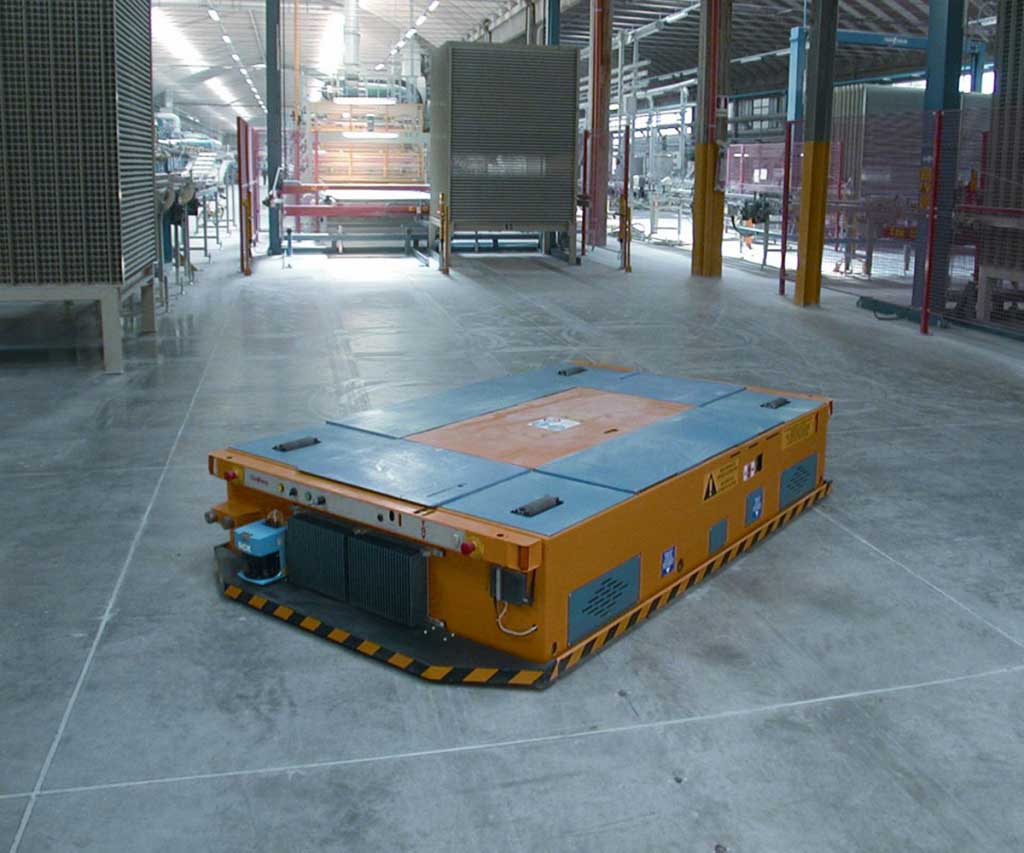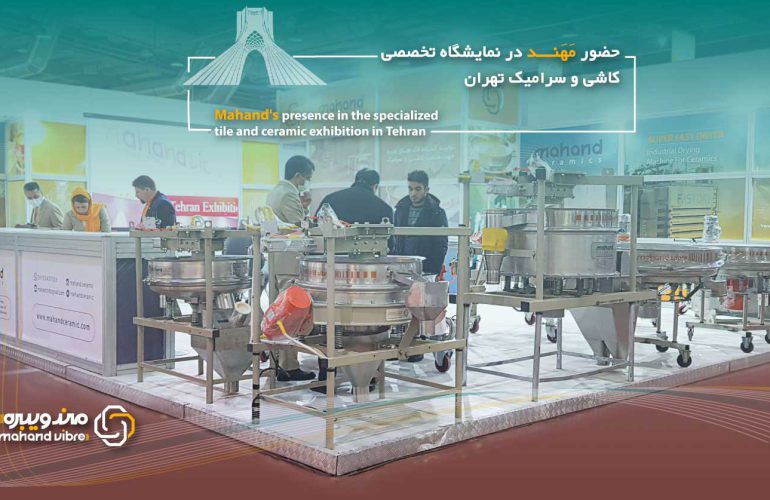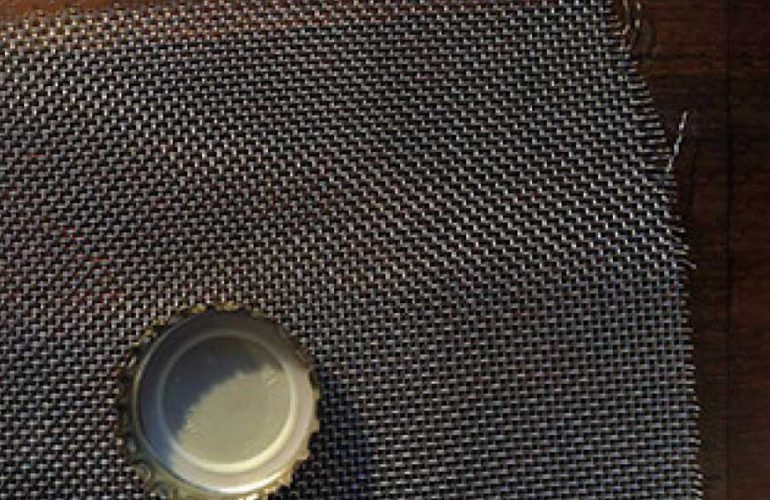TGV in the ceramic tile industry is an automatic and intelligent transporter device that uses artificial intelligence and systems (PLC) to transport the boxes related to ceramic tiles, which are the storage place for ceramic tiles in such factories, In this way, after filling the box in the machine (loading) or emptying it (unloading), the box replacement command is issued from the desired machine to the control room and the PLC system, after processing the process type to the nearest TGV in terms of location, commands Issues the removal and transfer of boxes .the reason why the nearest TGV is chosen for service is that the artificial intelligence system requires that the cost of box transfer be minimized, both in time dimension and in machine depreciation dimension.

TGV appearance structure
The TGV consists of a very hard iron cube mold used for the chassis. Inside the chassis are three very important boxes:
- Hydraulic and mechanical chamber which includes components such as hydraulic pump, condenser pump (cooling system), oil tank, valves, hydraulic fittings and cooling fan.
- Battery compartment A very strong battery of about 240 amperes is placed inside it.
- Electrical switchboard housing and system adjust of data transmission and command , which includes components such as PLC steering relays, power relays, inverters, sensors and photocells.
- In addition, the three parts of the device have six wheels to guide the device, which is responsible for the transfer of the device.
PLC command system
In the past, all movements of a device were done manually. For example, to move an axis, an operator was used to turn the device on and off. with the advancement of the industry in this field, these works were done by timers (timer relays) and semi-automatically connectors , which caused system failure, high cost of repairs and maintenance, and lack of necessary safety. obviously, this was done semi-automatically and it was not possible to use it as a fully automatic device for industrial use, because firstly, its maintenance cost was high and secondly, it took up a lot of space. but with the advent of PLCs and microprocessors, there was a huge industrial revolution in which all control systems were controlled by a small device called a PLC.

How TGV moves on the magnetized path
In the past, ceramic tile boxes were driven by special rails and transported to the production line by an operator (manpower).Gradually, with the advent of TGV and robotics, this system has completely changed and the transfer of tile boxes through a defined path and the movement of TGVs along these paths is done automatically and completely intelligently. this path contains a number of strong magnets that are installed at certain distances between the return lines on the ground. All paths that the TGV travels must have a magnet, and if it does not have a magnet, the TGV will deviate from the path and exit the automatic circuit.
Advantages of TGV intelligent system
The advantages of this system include mechanization of work and minimization of error rate, speeding up the work related to transporting boxes, reducing damage to raw tiles, aggregation of all statistics production and boxes, separation of all designs, sizes, Processes and etc mentioned.
Disadvantages of TGV intelligent system
Disadvantages of this system include the disappearance of manpower and the vulnerability of the network installed in the hall, which may lead to the temporary departure of TGVs from the network circuit. this may lead to the cessation of other TGVs in the production hall, which will eventually lead to a complete cessation of the production process. another important issue is that the system software may malfunction for any reason, in which case all the information about the boxes, parking numbers, designs and colors of tiles and box numbers will be lost and launched. Re-system These items must be manually re-entered into the new system, which is very difficult and time consuming. at the same time, the production process is still suspended until the end of this work. Of course, this problem can be solved by installing a backup system that stores the information coming to the server in parallel second by second.
Source: Journal of Ceramics and Construction





